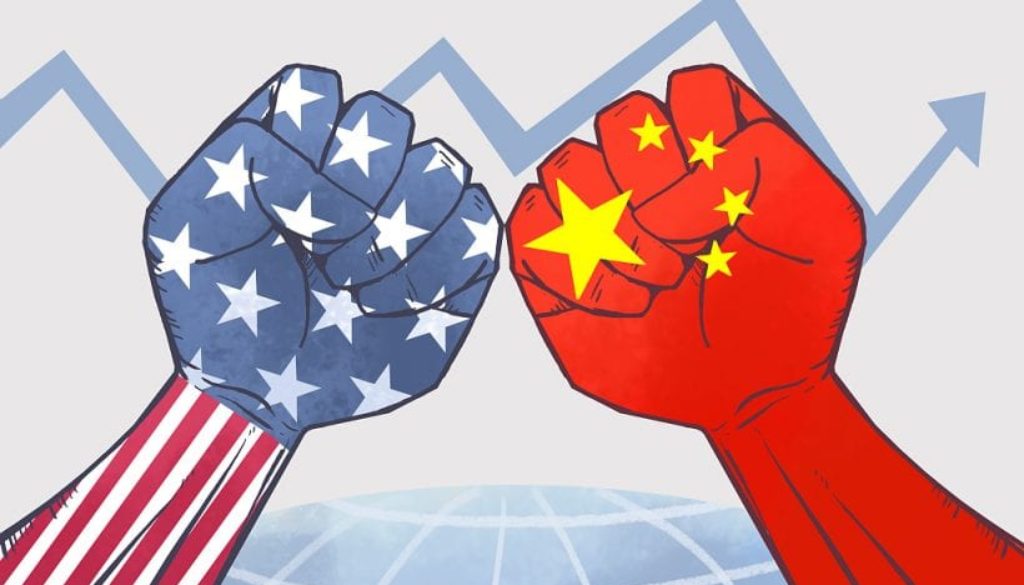Trade of Thrones: China-US Trade Wars
There is a cultural and trade war between two powerful houses. Nothing to fear, no Whytewalkers nor fire breathing dragons are involved. Just hard trade diplomacy, leveling the playing field, and perhaps, fighting for superpower dominance between China and the U.S.
Question is, who will take the Iron Throne? China and the U.S. are engaged in a tit-for-tat combat in the form of tariffs on imported goods, or what economists like to call ‘Trade Wars’. Ultimately, the largest concern of this epic battle is the expense of what and – more importantly – who?
China-US Trade History
In context, the U.S. and China has always maintained a cynical-yet-cordial relationship. Historically, the development of U.S. and Chinese markets over time has had a direct effect on how the two countries began interacting. United States began trading with China in the late 1970’s.
Before then, the U.S. had banned trade with China due to its’ political stance in Communism since China’s imperialism was removed by force by the Chinese Communists in 1949. Former U.S. President, Richard Nixon made historical headlines when he arranged a meeting with the late Chinese chairman, Mao Zedong and thus established U.S. and Chinese relations in 1972.
Seven years later, a Trade Relations Agreement between Washington D.C. and Shanghai was drafted and signed in 1979. Bilateral trade (exchange of goods between two nations) – amassed to $2.4 billion, from 1949 to 1980. By 1980, the first Special Economic Zones in China were created and it extended advantageous opportunities for both American and foreign investors.
Overall, the newly formed alliance seemed extremely optimistic; however, as the U.S. and Chinese economy continued to grow, so did the ambition of their political leaders.
Trade Wars?
The economic sparring started in early 2017 when President Donald Trump threw the first blow. In pursuit to satisfy one of his several pledges as the President of the U.S., Trump motioned to consult with the World Trade Organization (WTO) to perform an investigation on Chinese trading, to identify whether China has been violating intellectual property rights.
Such rights are significant in global trading because it protects creations and innovations manifested by human creativity. In the world of business, these are considered actual property that are shielded with the armor of copyright laws. In 2016, Trump was extremely vocal that China was in violation of these laws despite decades of joint ventures or collaborations with foreign and Chinese companies, allowing them to access advancements on certain technologies that would be considered illegal.
What are Tariffs?
The schism escalated when Trump started to impose tariffs on Chinese goods in 2018. In the capacity of trade, tariffs are additional fees that a country will assess on the imports, or received goods, from another country.
Tariffs are set to accomplish several things:
- To generate revenue for the government in order to pay off debt.
- To increase the cost of foreign imports so consumers are encouraged to purchase domestic goods or items produced within the nation.
In April 2018, Trump imposed a $50 billion tariff increase on Chinese goods; China retaliated by placing a tariff on U.S. goods for the same amount in June 2018. From mid-2018 to 2019, Trump and China’s President, Xi Jinping, have been continuing to exchange each other’s trade vitriol in a back-and-forth manner.
What Is Happening Now?
On May 10, 2019, President Trump ordered a $200 billion tariff attack on a 5,745 Chinese goods including products like: smartwatches, Bluetooth devices, and leather handbags. As a reprisal, Chinese President Xi Jinping has countered these attacks with an increase of tariffs on US imports by $60 billion. The economic clash will ultimately have dire effects on not just US and Chinese, but global markets.
Both countries have the largest economies in the world, the rise of import taxes are mutually detrimental to both countries on consumer and production levels.
![]() For example, luxury goods that are enjoyed by American people will soon cost more money. Prices for resources and raw materials for small business owners are also skyrocketing, causing higher operational expenses and loss. American farmers are also suffering from these trade wars, especially if they specialize in soybeans, corn, tobacco and wheat.
For example, luxury goods that are enjoyed by American people will soon cost more money. Prices for resources and raw materials for small business owners are also skyrocketing, causing higher operational expenses and loss. American farmers are also suffering from these trade wars, especially if they specialize in soybeans, corn, tobacco and wheat.
How Are We Affected?
More importantly, a census from the Office of United States Trade Representative reports that imports from China make up about 21.2% of total U.S. imports. In 2018, China imported an estimated $1.54 trillion in goods, which means the US exports less than 1% of China’s total imported goods. The U.S. goods trade deficit with Chinese imports amount to $419.2 billion.
In simpler terms, every one out of five items that the everyday consumer purchases will say “Made in China”. While that number may seem small, the goods that make up that percentage make up the majority of our computers and technology and parts of our agriculture.
![]()
‘Goods trade deficit’ also translates to how much more the U.S. imports from China than it exports. Needless to say, the U.S. economy is heavily driven by specific Chinese goods – and based on metrics, its looks like we need them more than they need us.
As we approach mid-2019, this trade of thrones is nowhere near finished. Several American businesses have fallen casualty in this war, while many others are at risk. American farmers, automobile manufacturers like Tesla and even tech companies like Apple will all be affected by this war. The biggest business owners and economists continue to question the semantics of President Trump, yet they know one thing for sure: winter is coming.





